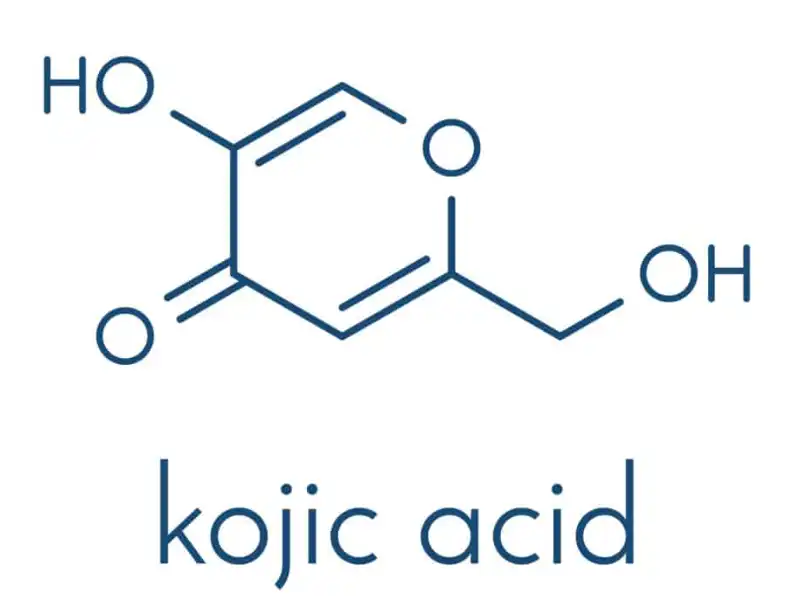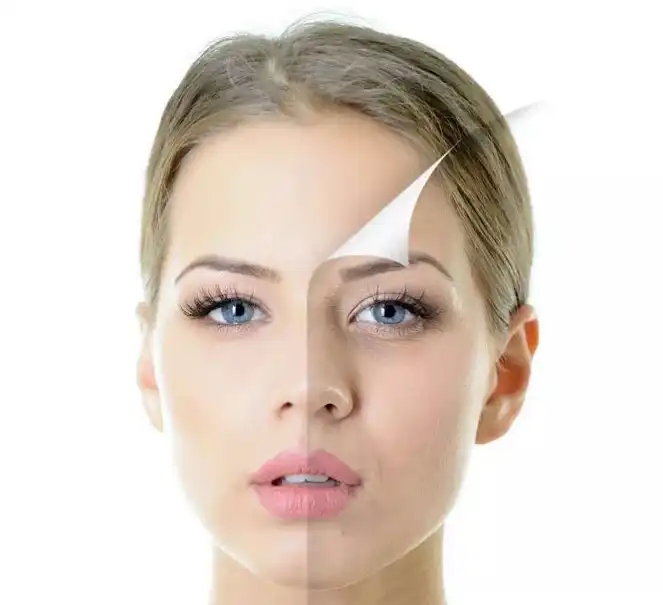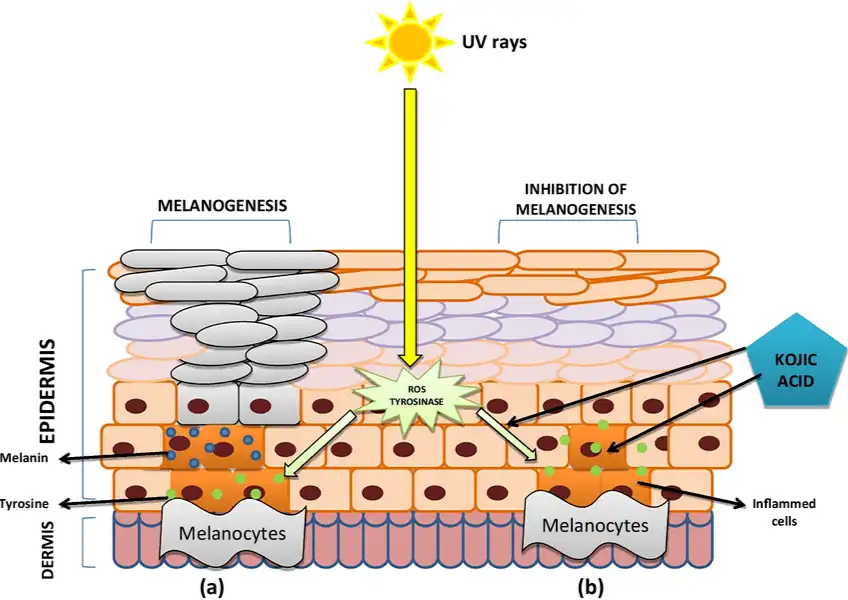Can kojic acid powder really whiten your skin?
Can kojic acid powder really whiten your skin?
Kojic acid, also known as kojic acid, is a natural organic compound with the chemical name 5-hydroxy-2-hydroxymethyl-4-pyrone. It is found in many fermented foods, such as soy sauce, wine, vinegar, etc. Kojic acid has strong antioxidant properties and can effectively resist the damage of free radicals to the skin.
A content of less than 2% can effectively reduce melanin deposition, inhibit the activity of tyrosinase in the process of melanin production, and have a significant whitening effect. It does not inhibit other enzymes and is now widely used in daily chemical industries such as whitening sunscreen cosmetics, solvents and toothpaste. This blog will explore its whitening principle and efficacy.

Kojic acid produced by fermentation
A secondary metabolite derived from microorganisms, produced by fermentation of edible koji fungi such as rice kojic acid, it is present in soy sauce, bean paste, and wine brewing. Kojic acid can be detected in many fermented products fermented by Aspergillus. Industrial production of kojic acid mostly uses glucose as raw material and is produced by fermentation of Aspergillus candida.
It has a simple structure, but due to the instability of its enol structure, it is often used as a skeleton for modification and derivatization, such as synthetic kojic acid dipalmitate, kojic acid ester, etc. These derivatives not only improve the solubility and stability of kojic acid in oily cosmetics, but also greatly improve the biological activity.
Benefits of Kojic Acid
Whitening and Spot Removal
Kojic acid can compete with tyrosinase for copper ions, thereby inhibiting the activity of tyrosinase and preventing the production of melanin, achieving the purpose of whitening.
Antioxidant
In addition to whitening, kojic acid also has free radical scavenging and antioxidant effects. It can help tighten the skin, promote protein aggregation, and tighten the skin.
Reduce Scars
Kojic acid can also reduce scar discoloration. Although the acid cannot reduce the thickness of scar tissue, it can improve the dark pigmentation of scars.
Antibacterial Acne Treatment
Kojic acid has antioxidant and antibacterial properties that can reduce bacterial skin infections. Some dermatologists also recommend using kojic acid ointment to treat acne because it can effectively kill acne-causing bacteria.

Whitening principle
Inhibit tyrosinase
Similar to VC, it binds to the copper ions in tyrosinase, thereby blocking the activity of the enzyme.
Inhibit the production of melanin oxidation intermediates
It can be oxidized by the intermediate product dopaquinone, thereby reducing the chain reaction substrate and inhibiting the conversion of melanin intermediates from dopaquinone to the final melanin. Because the effect is relatively strong, a lower concentration can achieve a good effect. Because the effect is too strong, it may cause skin redness and contact dermatitis, so most whitening products add relatively low levels.

Advantages
Can be used for whitening, removing spots, improving skin tone, etc.
Can additionally retain moisture and increase skin elasticity.
High transdermal absorption rate, good tyrosinase inhibition effect, no cell toxicity.
Notes
It is irritating to some extent, so use with caution on sensitive skin.
If not used for a long time, remember to keep it in the refrigerator to help preserve its activity.
It will become ineffective under strong light, so products containing kojic acid are best used at night.
There are strict control measures for the amount of addition in food grade, cosmetic grade, and pharmaceutical grade. In cosmetics, it is usually controlled below 2%. Long-term excessive use of cosmetics may cause skin problems such as white spots.
If you would like more information, please contact us at sales@sxytorganic.com
_1737093401309.png)
